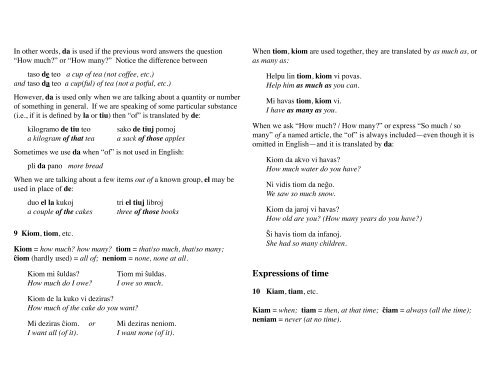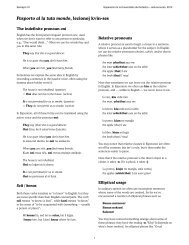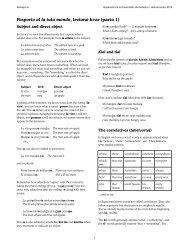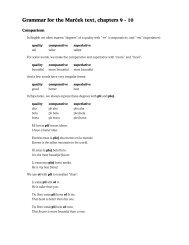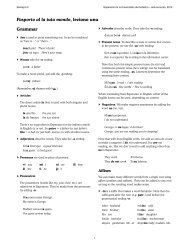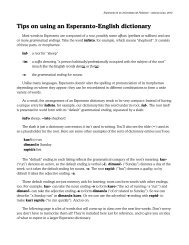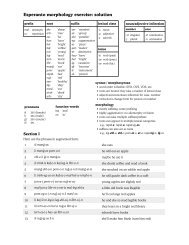The alphabet and pronunciation - Lodestone
The alphabet and pronunciation - Lodestone
The alphabet and pronunciation - Lodestone
- No tags were found...
You also want an ePaper? Increase the reach of your titles
YUMPU automatically turns print PDFs into web optimized ePapers that Google loves.
In other words, da is used if the previous word answers the question“How much?” or “How many?” Notice the difference between! taso de teo a cup of tea (not coffee, etc.)<strong>and</strong>!taso da teo a cup(ful) of tea (not a potful, etc.)!However, da is used only when we are talking about a quantity or numberof something in general. If we are speaking of some particular substance(i.e., if it is defined by la or tiu) then “of” is translated by de:! kilogramo de tiu teo! sako de tiuj pomoj! a kilogram of that tea! a sack of those applesSometimes we use da when “of” is not used in English:! pli da pano more breadWhen we are talking about a few items out of a known group, el may beused in place of de:! duo el la kukoj! tri el tiuj libroj! a couple of the cakes! three of those books9 Kiom, tiom, etc.Kiom = how much? how many? tiom = that/so much, that/so many;!iom (hardly used) = all of; neniom = none, none at all.! Kiom mi "uldas?! Tiom mi "uldas.! How much do I owe?! I owe so much.! Kiom de la kuko vi deziras?! How much of the cake do you want?! Mi deziras #iom. or! Mi deziras neniom.! I want all (of it).! I want none (of it).When tiom, kiom are used together, they are translated by as much as, oras many as:! Helpu lin tiom, kiom vi povas.! Help him as much as you can.! Mi havas tiom, kiom vi.! I have as many as you.When we ask “How much? / How many?” or express “So much / somany” of a named article, the “of” is always included—even though it isomitted in English—<strong>and</strong> it is translated by da:! Kiom da akvo vi havas?! How much water do you have?! Ni vidis tiom da ne$o.! We saw so much snow.! Kiom da jaroj vi havas?! How old are you? (How many years do you have?)! %i havis tiom da infanoj.! She had so many children.Expressions of time10" Kiam, tiam, etc.Kiam = when; tiam = then, at that time; !iam = always (all the time);neniam = never (at no time).


